- Calls to this hotline are currently being directed to Within Health, Fay or Eating Disorder Solutions
- Representatives are standing by 24/7 to help answer your questions
- All calls are confidential and HIPAA compliant
- There is no obligation or cost to call
- Eating Disorder Hope does not receive any commissions or fees dependent upon which provider you select
- Additional treatment providers are located on our directory or samhsa.gov
Student Athletes with Eating Disorders – A Drive for Perfection
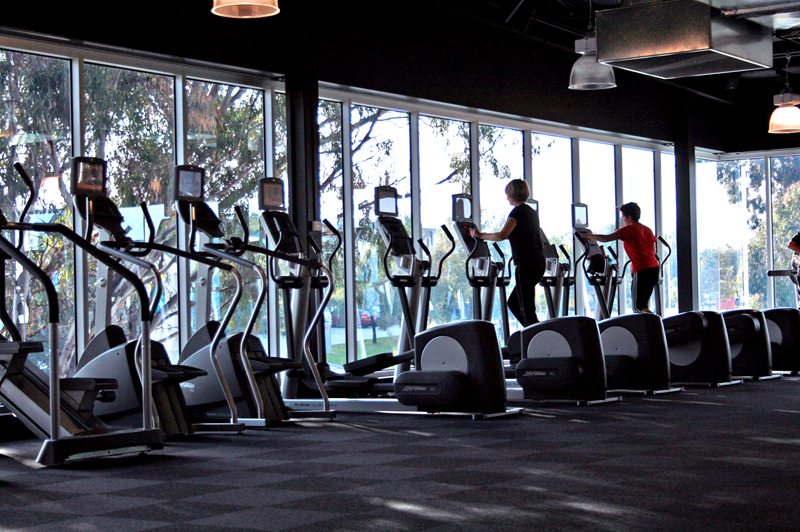
Article Contributed by Staff of The Meadows Ranch
Which comes first, the desire to be a great athlete or the development of an eating disorder? Are athletes drawn to unique eating habits even before they consider disordered eating patterns? How are athletes with eating disorders overcoming their problems?
Could it be that every athlete “tip toes” into the world of extreme eating habits as a mean of improved performance, only to find they are later in the grips of eating disorder? Or could it be that people who are naturally drawn to athletics are already in an Eating Disorder and for whom restricting and purging are no longer an effective means of managing calories?
A Deadly Combination of Eating Disorder Habits
When a person combines food restriction, purging through laxative use, and vomiting with extreme exercising, one creates a deadly eating disorder that takes time, effort and a team of professionals to interrupt. However, elite athletes with eating disorders tend to fall into a different form of an eating disorder, using mostly food restricting and exercise.
According to Thompson, one significant behavioral and physiological trait of athletes with Anorexia is “obsessiveness and preoccupation with low weight and engaging in minimal eating.”
Exercise Bulimia
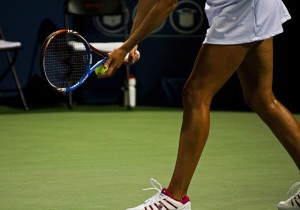 The term exercise bulimia is aligned with a person who exercises excessively, to the point of social isolation, physical injuries, exhaustion, with calorie restriction when hungry, and binge eating or overeating. An active athlete who exercises four or five hours a day may need 4,000-8,000 calories per day to sustain muscle recovery.
The term exercise bulimia is aligned with a person who exercises excessively, to the point of social isolation, physical injuries, exhaustion, with calorie restriction when hungry, and binge eating or overeating. An active athlete who exercises four or five hours a day may need 4,000-8,000 calories per day to sustain muscle recovery.
And yet they may take in only 2000-3000 calories a day, leaving the body to find it’s nutrients from its own muscle tissue. This type of eating disorder is not always identified as a problem since the athlete is perceived as healthier than everyone else, almost the envy of others. People may describe the dedication to the sport as “just trying to be healthy” or “I wish I could be that fit.”
The Character Traits of Athletes with Eating Disorders
“Athletes with eating disorders tend to show certain temperament and character traits,” as Dr. Emmett Bishop discussed at the 2014 Eating Recovery Center Conference. Dr. Bishop discussed the idea that “high persistence supports a focused vision for success, in combination with low novelty seeking, and a high harm avoidant score can contribute to the ability of the athlete to endure pain, hunger and achieve goals.”
Sherman and Thompson believe the elite athlete is similar to the Restricting Anorexic showing similar signs of “high pain threshold, able to follow a person’s lead (coach), people pleasing and able to focus on a single goal.”
My Personal Experiences with the Pressure
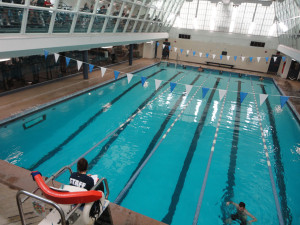 My personal experience as an athlete started at the age of 12. I was happiest being outdoors and swimming, surfing, riding my horses, playing with friends in the creek or going for hikes in the mountains.
My personal experience as an athlete started at the age of 12. I was happiest being outdoors and swimming, surfing, riding my horses, playing with friends in the creek or going for hikes in the mountains.
I was fortunate to grow up in a culture that supported females who engaged in male sports but I still couldn’t avoid pressures related to body image, weight, performance, and self-esteem that fuels eating disorders in athletics. I was goal-oriented, focused and wanted to be the best because I truly loved every sport I was involved in.
The drive for perfection in my physical accomplishments became an obsession for me. I became an All-American Collegiate Swimmer, World Class Windsurfer, surfer, and equestrian.
The Swimming Program & Weighing In
A memorable glimpse into Eating Disorders and athletics came when a “Division I Big Ten Swimming Program,” who created some of the best swimmers in the world, recruited me. It was well-known they did “weigh-ins” three times a week and that the gain of two pounds per week meant a possible loss of pool time swimming scholarship.
After my campus and pool tour, one of the swimmers excitedly showed me the movable ceiling where all the binge foods were stored. She took a broomstick, pushed the ceiling open, and all the candy bars fell out. Then she quickly showed me the storage bins built into the mattresses.
Although I was driven to perfection at that time, I knew something was not “right” for me in that pressure cooker of a swim program. Instead, I picked a world-class school with an excellent swimming program that did not have weigh-ins. I had friends and coaches who helped guide me to the best choices for me.
Athletes Are Celebrities and Have the Same Body Pressures
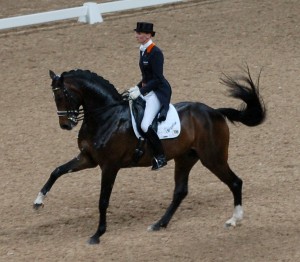 There was a time when athletes were considered a fringe sector of society, perceived as wasting their time in the gym or “playing at” their sport. Women, in particular, were considered an oddity or too masculine when they spent their time in any sport since sports were by nature masculine.
There was a time when athletes were considered a fringe sector of society, perceived as wasting their time in the gym or “playing at” their sport. Women, in particular, were considered an oddity or too masculine when they spent their time in any sport since sports were by nature masculine.
Most athletes were considered “jugheads” or of a lesser intelligence since they were participating in something that did not earn a paycheck.
Athletes are now considered closer to Hollywood movie stars than fringe members of society, earning enviable salaries and notoriety for their athletic records.
When Thinness Is Encouraged
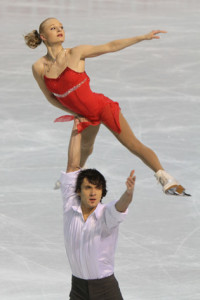 Lean body sports such as swimming, gymnastics, track and field, figure skating, diving, equestrian sports, volleyball, and bodybuilding are sports where body thinness is desired and encouraged. These are also the sports where tight-fitting clothes are believed to enhance one’s performance since they do not hinder the athlete’s movement.
Lean body sports such as swimming, gymnastics, track and field, figure skating, diving, equestrian sports, volleyball, and bodybuilding are sports where body thinness is desired and encouraged. These are also the sports where tight-fitting clothes are believed to enhance one’s performance since they do not hinder the athlete’s movement.
These lean muscle sports in combination with tight-fitting, revealing clothing certainly lends itself to the development of issues with food or an eating disorder. And since athletes have a long history of strange eating patterns, such as multiple raw eggs, high amounts of protein, and singular food selections, athletes present as people who can use significant amounts of education on how to stay healthy.
As Dr. Thompson believes, “I do not want to take away the athletics, I want to take away the eating disorder.” However, over time the athlete who wants to recover from an eating disorder may need to either change sports or limit their activities as it ties into their eating disorder.
Keeping Determined, But Not Obsessed
The student-athlete is a precious blend of self-determination, drive for success and goal oriented young person. Our high schools and colleges can become educated on how to identify a struggling athlete.
Since athletes are accustomed to working on teams, they are particularly open to the team format when a dietician, therapist, doctor, and coach are working together on behalf of the student athlete’s performance and food-related issues. Parents can work with their children who love sports, to help inform the school and outside professionals. Let’s all work together in keeping our student-athletes healthy in mind, body, spirit, and sport.
References:
- Source: Helping Athletes with Eating Disorders, Thompson, R. A., Sherman, R. T., Human Kinetics Publishers, 1993
Article Contributed by Staff of The Meadows Ranch.
The opinions and views of our guest contributors are shared to provide a broad perspective of eating disorders. These are not necessarily the views of Eating Disorder Hope, but an effort to offer discussion of various issues by different concerned individuals.
We at Eating Disorder Hope understand that eating disorders result from a combination of environmental and genetic factors. If you or a loved one are suffering from an eating disorder, please know that there is hope for you, and seek immediate professional help.
Edited & Updated by Crystal Karges on June 7, 2017
Reviewed By: Jacquelyn Ekern, MS, LPC on June 29, 2018.
Published on EatingDisorderHope.com

The EatingDisorderHope.com editorial team comprises experienced writers, editors, and medical reviewers specializing in eating disorders, treatment, and mental and behavioral health.

